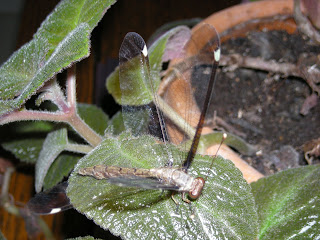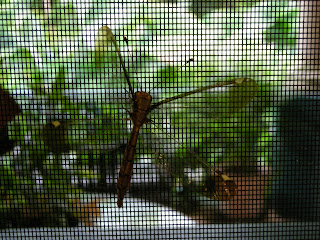if and when
Blogger ever starts working
These are happy kids with a mom and a dad
One of the Latino stereotypes that I believed when I came to Honduras was that that Latinos, in general, placed more value on "family" than some other groups of people. While it is true that many, many Hondurans love and protect and care for their children to the best of their abilities, it seems that every year there are more and more who discard them when the next woman or man comes along who catches their eyes.
In my first few weeks and months here in Honduras, it seemed that virtually every woman I met had a child, or more than one, and no husband. In some cases the father of the children was gone to the U.S. and was sending money to help support them, but in most cases the father was just not in the picture and had never been. I've met many adults who have never known a father, who now have children who have never known a father either.
A personal story that I can relate involves a 4-year old girl who was offered to us as a "regalo" (gift). The girl's father was gone to the U.S. and her mother was pregnant by a new boyfriend. The boyfriend said that he would take care of woman and his child but he didn't want another man's child, so she had to "get rid of la niña" (the girl).
This was all relayed to me as if it was a perfectly normal circumstance and an opportunity for the mother to better her life. After talking to several people about it, I found that it was, indeed, an everyday occurrence and not considered shocking at all.
The following article is reprinted with the permission of the author, who has many years experience with helping families and children in Honduras but who has asked to remain anonymous because of dealings with Honduran government officials and courts.
In Honduras, 50% of the population is 15 years old and younger (as of January 2006). The average woman in Honduras is only 15 years old when she gives birth to her first child. In 2006, 80% of all birth certificates issued did not name a father.
The reasons for this lack of family structure in Honduras include: large number of men (and increasingly women) leaving for the United States and Spain; high unemployment and underemployment; overall failing of the moral structure of the society in that there is no longer any stigma to having a child outside of marriage; lack of education; lack of a loving, supportive environment within the family which leads to young women having babies in order to have someone to love; macho attitude of wanting to have as many children as possible by as many women as possible.
Hondurans (in lower economic levels) tend to think of children as financial assets, rather than as liabilities. In the US and Europe, and among upper classes in Honduras, it is understood that having a child entails a level of financial cost (education, food, clothing, etc.). The poor tend to think in terms of a child as a financial retirement plan... the child will be expected to support the mother when she is too old to work.
Maquilas generally will only employ women from the age of 18 through age 30. At 30, women are considered too old, too slow, and are dismissed. So if a woman in Honduras has her first child when she is 15, by the time she "retires" her child will be ready to start working. Most women over 30 tend to sell tortillas on the streets or do other things from their homes rather than work in a company. They rely on their children to work and provide for them. This attitude leads women to want as many children as possible.
The consequences of the lack of family structure include child abuse. This abuse, especially sexual abuse, is the most common problem. Men who are not related to the children in the home feel free to use them sexually. Women are hesitant to file police reports or try to protect their children for fear of reprisals from the men, especially physical violence (now estimated to be common in more than 30% of all homes) and abandonment. Serial "marriages" are common with three or four men coming into the home over the years and fathering their "own" children. This leaves the other children at great risk of abandonment and abuse.
In addition, there exists a very weak legal system in Honduras, a lack of police in the communities, a high level of violence, few options for the courts to place abused children in safe environments, and pressure from the government to return children to their families so as to not present statistics to the international community that reflect the true situation of the children. Each time a child is removed from the family unit, the "count" goes up on the problem of children at social risk, and the "image" of Honduras is damaged.






















































 Welcome to my Blogicito —
Welcome to my Blogicito — 








